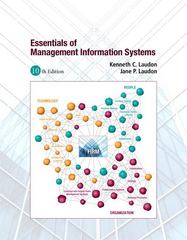Question
Of Critical Importance: Reprocessing Flexible Endoscopes Post Test 1. True or False. When reprocessing flexible endoscopes, the slightest departure from recommended protocols can lead to
Of Critical Importance: Reprocessing Flexible Endoscopes Post Test 1. True or False. When reprocessing flexible endoscopes, the slightest departure from recommended protocols can lead to the survival of disease-causing organisms.
2. Poor work practices that increase the risk of patient infection include: A. Inadequate cleaning B. Using the wrong brush size, or reusing disposable brushes C. Failure to follow recommended cleaning and disinfection guidelines and procedures D. All of the above
3. True or False. The best time to inspect the scope for integrity, function, and cleanliness is at the point of use.
4. The following can be said about Point of Use cleaning: A. Point of use or pre-cleaning should be performed immediately after the endoscope is used to remove gross soil B. Place the distal end of endoscope in a detergent solution. Suction the solution through the biopsy channel, and alternate suctioning the detergent solution and air several times until the solution is visibly clean. C. Wipe the insertion tube with disposable cloths or a sponge moistened with fresh solution D. All of the above 5. The following can be said about Leak Testing except: A. It is absolutely essential that a leak test be performed prior to cleaning B. Leak testing looks for damage that may allow solutions to enter parts of the scope not designed for fluid exposure C. Video scopes must have their caps removed prior to leak testing or the scope may not pressurize properly D. Bubbles coming from the scope are an indication of tears or holes and a defective scope
6. True or False. Meticulous manual cleaning is absolutely essential for manual but not automated disinfection in order to remove microbial burden that can interfere or inactivate the disinfection solution.
7. The following can be said about brushes during the cleaning process: A. It is important to select cleaning brushes appropriate to the size of the channel, ports, connectors , and other openings B. Clean the channels by inserting a brush through the appropriate port and extend the brush until it exits the channel. Continue until there is no debris left on the brush. C. When brushing an endoscope, if you meet with resistance when placing the brush into the scope, stop immediately
D. All of the above
8. True or False. After cleaning, all flexible endoscopes should receive sterilization.
9. True or False. During the disinfection/sterilization process, if a cycle is interrupted, then disinfection or sterilization cannot be ensured, and the entire process will have to be repeated.
10. The following can be said of the final drying step: A. The final drying step ensures that waterborne contaminants are not allowed to stay within the scope while the scope is in storage before it is used B. By inserting alcohol into the channels of the scope, the water is forced out, and the fast-drying alcohol removes the chance of water being able to stand in the scope C. Drying should be performed during both manual and automatic processing D. All of the above
Step by Step Solution
There are 3 Steps involved in it
Step: 1

Get Instant Access to Expert-Tailored Solutions
See step-by-step solutions with expert insights and AI powered tools for academic success
Step: 2

Step: 3

Ace Your Homework with AI
Get the answers you need in no time with our AI-driven, step-by-step assistance
Get Started


